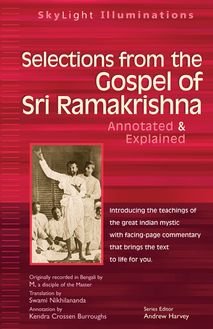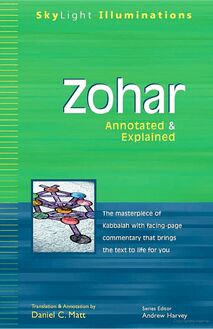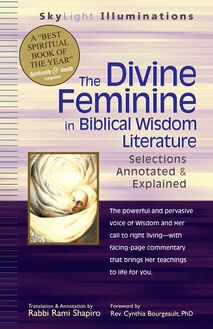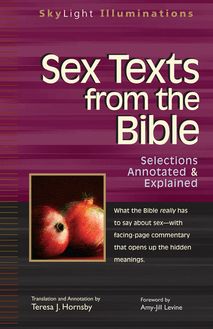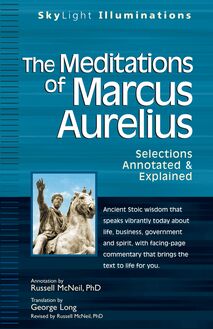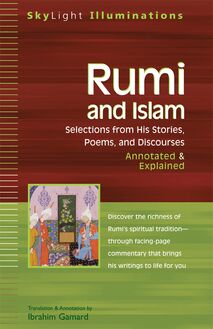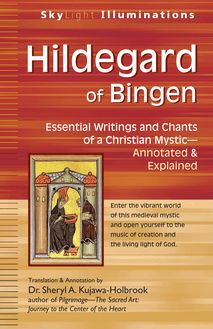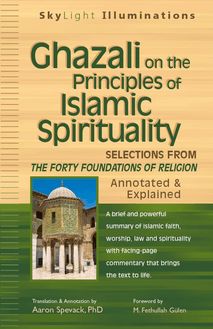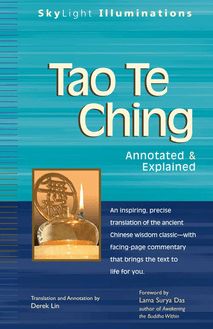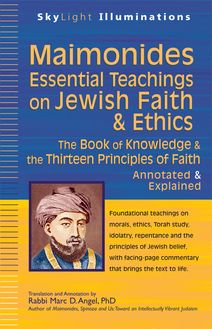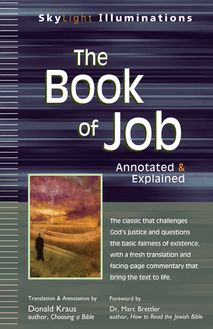Gnostic Writings on the Soul , livre ebook
68
pages
English
Ebooks
2011
Vous pourrez modifier la taille du texte de cet ouvrage
Obtenez un accès à la bibliothèque pour le consulter en ligne En savoir plus
Découvre YouScribe en t'inscrivant gratuitement
Découvre YouScribe en t'inscrivant gratuitement
68
pages
English
Ebooks
2011
Vous pourrez modifier la taille du texte de cet ouvrage
Obtenez un accès à la bibliothèque pour le consulter en ligne En savoir plus
Publié par
Date de parution
18 août 2011
Nombre de lectures
2
EAN13
9781594733796
Langue
English
The inspiration and insight of these Gnostic writings can become a companion on your own spiritual journey.
Just what is a soul, exactly? Where did the idea come from? How do we experience our souls? Two ancient Gnostic texts—The Exegesis on the Soul and The Hymn of the Pearl, both presented here in all-new translations—hold important clues to the development of the soul as a concept and reveal inspiring ways your own soul can remember and return to its unique, divine purpose.
The Exegesis on the Soul depicts the soul as a feminine figure who has fallen into the corrupted world and must find her way back to the Divine. It is the story of the soul’s struggle and redemption that will embolden your own spiritual pilgrimage. The Hymn of the Pearl is an allegorical story about a prince sent to retrieve a precious pearl but who soon forgets his purpose and falls asleep. It is a moving tale of the importance of remembering your soul’s identity and calling—and knowing that only you can fulfill your destiny.
Accessible facing-page commentary explains the Gnostic writings for you even if you have no previous knowledge of Gnosticism or early Christianity. Additional material draws on ancient religions, Platonism, Christianity, Judaism, Islam and modern philosophical and psychological notions of the soul to place the Gnostic teachings in a clear historical context. By following the development of this concept through time, you will more clearly perceive—and respond to—the divine spark found in your own soul.
Publié par
Date de parution
18 août 2011
Nombre de lectures
2
EAN13
9781594733796
Langue
English
Selected Books in the SkyLight Illuminations Series
The Art of War-Spirituality for Conflict: Annotated & Explained
Bhagavad Gita: Annotated & Explained
The Book of Mormon: Selections Annotated & Explained
Celtic Christian Spirituality: Essential Writings-Annotated & Explained
Chuang-tzu: The Tao of Perfect Happiness-Selections Annotated & Explained
Confucius, the Analects : The Path of the Sage-Selections Annotated & Explained
Dhammapada: Annotated & Explained
The Divine Feminine in Biblical Wisdom Literature: Selections Annotated & Explained
Ecclesiastes: Annotated & Explained
The End of Days: Essential Selections from Apocalyptic Texts-Annotated & Explained
Ethics of the Sages: Pirke Avot -Annotated & Explained,
Ghazali on the Principles of Islamic Spirituality: Selections from Forty Foundations of Religion -Annotated & Explained
Gnostic Writings on the Soul: Annotated & Explained
The Gospel of Philip: Annotated & Explained
The Gospel of Thomas: Annotated & Explained
Hasidic Tales: Annotated & Explained
The Hebrew Prophets: Selections Annotated & Explained
The Hidden Gospel of Matthew: Annotated & Explained
The Infancy Gospels of Jesus: Apocryphal Tales from the Childhoods of Mary and Jesus-Annotated & Explained
John and Charles Wesley: Selections from Their Writings and Hymns-Annotated & Explained
The Lost Sayings of Jesus: Teachings from Ancient Christian, Jewish, Gnostic, and Islamic Sources-Annotated & Explained
Maimonides-Essential Teachings On Jewish Faith and Ethics: The Book of Knowledge and the Thirteen Principles of Faith-Annotated & Explained
The Meditations of Marcus Aurelius: Selections Annotated & Explained
Native American Stories of the Sacred: Annotated & Explained
Philokalia: The Eastern Christian Spiritual Texts-Annotated & Explained
Proverbs: Annotated & Explained
The Qur an and Sayings of Prophet Muhammad: Selections Annotated & Explained
Rumi and Islam: Selections from His Stories, Poems, and Discourses-Annotated & Explained
The Sacred Writings of Paul: Selections Annotated & Explained
Saint Augustine of Hippo: Selections from Confessions and Other Essential Writings-Annotated & Explained
The Secret Book of John: The Gnostic Gospel-Annotated & Explained
Selections from the Gospel of Sri Ramakrishna: Annotated & Explained
Sex Texts from the Bible: Selections Annotated & Explained
Spiritual Writings on Mary: Annotated & Explained
St. Ignatius Loyola-The Spiritual Writings: Selections Annotated & Explained
Tanya , the Masterpiece of Hasidic Wisdom: Selections Annotated & Explained
Tao Te Ching: Annotated & Explained
The Way of a Pilgrim: The Jesus Prayer Journey-Annotated & Explained
Zohar: Annotated & Explained
Gnostic Writings on the Soul:
Annotated & Explained
2007 First Printing
Translation, annotation, and introductory material 2007 by Andrew Phillip Smith
Foreword 2007 by Stephan A. Hoeller
All rights reserved. No part of this book may be reproduced or transmitted in any form or by any means, electronic or mechanical, including photocopying, recording, or by any information storage and retrieval system, without permission in writing from the publisher.
For information regarding permission to reprint material from this book, please mail or fax your request in writing to SkyLight Paths Publishing, Permissions Department, at the address / fax number listed below, or e-mail your request to permissions@skylightpaths.com .
Library of Congress Cataloging-in-Publication Data
Smith, Andrew Phillip, 1966-
Gnostic writings on the soul : annotated & explained / translations and annotations by Andrew Phillip Smith.
p. cm.
Includes bibliographical references.
ISBN-13: 978-1-59473-220-1 (quality pbk.)
ISBN-10: 1-59473-220-5 (quality pbk.)
1. Exegesis on the soul. 2. Hymn of the soul. 3. Gnosticism. I. Exegesis on the soul. 2007. II. Hymn of the pearl. 2007. III. Title.
BT1392.E932S65 2007
299 .932-dc22
2006037624
10 9 8 7 6 5 4 3 2 1
Manufactured in the United States of America
Cover design: Walter C. Bumford III
Cover art: Plate 24, The First Book of Urizen copy A, William Blake (1794).
SkyLight Paths Publishing is creating a place where people of different spiritual traditions come together for challenge and inspiration, a place where we can help each other understand the mystery that lies at the heart of our existence.
SkyLight Paths sees both believers and seekers as a community that increasingly transcends traditional boundaries of religion and denomination-people wanting to learn from each other, walking together, finding the way .
SkyLight Paths, Walking Together, Finding the Way and colophon are trademarks of LongHill Partners, Inc., registered in the U.S. Patent and Trademark Office.
Walking Together, Finding the Way
Published by SkyLight Paths Publishing
A Division of LongHill Partners, Inc.
Sunset Farm Offices, Route 4, P.O. Box 237
Woodstock, VT 05091
Tel: (802) 457-4000 Fax: (802) 457-4004
www.skylightpaths.com
For my soul and my spirit.
Contents
Foreword
Introduction
A Note on the Translation
The Exegesis on the Soul
Introduction
The Exegesis on the Soul
Annotations
The Hymn of the Pearl
Introduction
The Hymn of the Pearl
Annotations
Notes
Suggestions for Further Reading
About SkyLight Paths
Copyright
Foreword
Stephan A. Hoeller
This book has as its subject two Gnostic myths. The use of myths in the Gnostic tradition is well known, although the nature and purpose of such myths is not always understood. In his work Essays on a Science of Mythology (written in collaboration with Carl G. Jung), the great Hungarian mythologist Carl Kerenyi wrote that the Gnostics can tell us about what comes closest to mythology in mysticism. The mystical mythology of the Gnostics is thus a phenomenon of unique character and distinction. Unlike the mythologies of many peoples, including the Homeric Greeks, the Gnostic myths were rooted in highly charged personal experience of exalted states of consciousness. At the heart of Gnosticism lies the experience of Gnosis, which has been understood by several present-day scholars as being the experience of the ontological self. This self (recognized by the Gnostics as the pneuma , or spirit) was regarded as being of the same nature as God, so that such experience would inevitably join human consciousness with divinity. In The Gnostic Gospels , Elaine Pagels aptly characterized the personal mystical experience of the Gnostics as Self-Knowledge as Knowledge of God. This is the knowledge that is then turned by Gnostics into that most creative of symbolic communications known as myth.
Already in classical antiquity, the Greek word mythos had come to mean a tale of a nonhistorical nature with protagonists of a supernatural sort, such as gods, goddesses, heroes, and unearthly creatures. The eighteenth- and nineteenth-century Romantics used the word myth to describe a story possessing a timeless character and dealing with transmundane concerns. Most definitions suggest that a myth is an account that is not historically true, yet represents an expression of timeless truths. Mythic events occur not in ordinary time but once upon a time, in an unspecified time similar to what the Australian aboriginals have called dreamtime. Gnostic mythmakers drew their inspiration from such timeless experiences. Most important, their exalted experiences of Gnosis could not be expressed just as well in a prosaic way, for such experiences could be brought to consciousness best in the form of myth. Hence, the overwhelming majority of Gnostic scriptures are mythic rather than factual in character, for myths constitute the optimal instrumentalities whereby the insights glimpsed by the Gnostic sages were made available to their fellow seekers after Gnosis.
The study of Gnostic scriptures discloses four principal mythologems, which appear and reappear with great frequency in such literature. Some scriptures are predominantly devoted to one or the other of these themes, while in other instances one finds them in various combinations. These four themes are as follows: (1) the myth of the feminine deific principle (frequently called Sophia); (2) the myth of the imperfect demiurge (intermediate creator) of the world; (3) the myth of the Redeemer (usually identified with Jesus) who redeems souls not from sin but from terrestrial confinement; and lastly (4) the myth of the soul s journey from its original heavenly habitat, its capture by dark forces of unconsciousness and imprisonment in matter, and its glorious return to the blissful light-world after its liberation.
The two scriptures translated and annotated by Andrew Phillip Smith belong obviously to this fourth category. The Exegesis on the Soul is part of the well-known collection of scriptures usually known as the Nag Hammadi Library. This scripture could have accurately been titled The Journey of the Soul instead, for it describes in poetic narrative form the origins, descent, and liberated ascent of a being called Psyche (Soul). It has been suggested by some scholars that the author of this scripture may have been a woman, for the existential condition of the female sex is expressed by the author with such conviction that one suspects the hand of experience. The Exegesis on the Soul and the second mythic poem included in this work, The Hymn of the Pearl , describe in mythic metaphors the great story that is implicit in all Gnostic writings, although it appears in explicit form in others. This story may be briefly summarized thus:
In a time before time there was no person or thing, only an all-encompassing unitary essence of light. From this boundless and luminous unity there came forth individual sparks of light, which eventually came to be confined in shells of profound darkness. In these prisons the sparks fell into an uneasy state of sleep from which only the experience of transcendental kno
